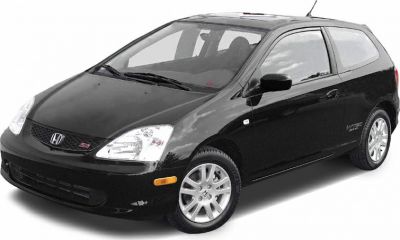 1994 Nissan Lucino Dimensions, Size & Specs
1994 Nissan Lucino Dimensions, Size & SpecsMeasurements of the 1994 Nissan Lucino, engineered for optimal performance and comfort
| Dimensions | |
|---|---|
| Length: | 4285 mm168.7 in14.1 ft |
| Width: | 1690 mm66.5 in5.5 ft |
| Height: | 1375 mm54.1 in4.5 ft |
| Weight Specifications | |
| Curb Weight: | 1275-1345 kg2811-2965 lbs |
| Tire Specifications | |
| Rims Size: |
|
| Tire Sizes: |
|
The Nissan Lucino coupe, produced between 1994 and 1998, is a compact and sporty vehicle that blends style with practical dimensions ideal for urban and suburban driving. Measuring 4285 mm (168.7 inches) in length, 1690 mm (66.5 inches) in width, and 1375 mm (54.1 inches) in height, the Lucino maintains a low and sleek profile suitable for those seeking a nimble coupe. Its curb weight ranges between 1275 and 1345 kg (2811 to 2965 lbs), making it lightweight enough to offer responsive handling and efficient performance. The car rides on smaller wheels, with stock rim sizes of 13 inches, paired with tires measuring 165/80 R13S, 165/80 R13 S, or 185/65 R14 H, contributing to a comfortable yet agile driving experience. The compact size and moderate weight make the Lucino a practical choice for drivers prioritizing maneuverability without sacrificing the sporty coupe aesthetic. Overall, the Nissan Lucino of this generation represents a balanced option in the compact coupe segment during the mid-1990s, combining appealing dimensions with decent weight distribution for everyday driving.
Discover the standout features that make the 1994 Nissan Lucino a leader in its class
Have a question? Please check our knowledgebase first.
The Nissan Lucino coupe produced between 1994 and 1998 has overall dimensions measuring 4285 mm in length (approximately 168.7 inches), 1690 mm in width (about 66.5 inches), and 1375 mm in height (approximately 54.1 inches). These dimensions position the Lucino as a compact coupe, making it manageable in urban environments and suitable for drivers looking for a sportier profile without sacrificing too much interior space.
The curb weight of the Nissan Lucino from 1994 to 1998 ranges from 1275 kg to 1345 kg (approximately 2810 lbs to 2965 lbs). This moderate weight is typical for compact coupes of its era, contributing to its nimble handling and relatively responsive steering. The lighter curb weight also aids in fuel efficiency and acceleration, providing an enjoyable driving experience while maintaining manageable operating costs.
The Nissan Lucino offered rim sizes primarily of 13 inches during its production years, paired with several tire size options. These included 165/80 R13S, 165/80 R13 S, and 185/65 R14 H tire sizes. The use of smaller 13-inch rims with narrow tires allowed for improved ride comfort and fuel efficiency, while the 14-inch tires with slightly wider dimensions could provide enhanced grip and sporty handling characteristics.
Yes, the Nissan Lucino compact coupe fits comfortably within the dimensions of a typical residential garage. With a length of 4285 mm (168.7 inches), width of 1690 mm (66.5 inches), and height of 1375 mm (54.1 inches), it is well within the dimensions of most standard single-car garages which are generally around 2400-3000 mm wide and 4800-6000 mm long. This makes it easy for owners to park and store the car without spatial concerns.
The Nissan Lucino did not have a direct predecessor under the same model name as it was introduced as a specific coupe variant during the mid-1990s. However, compared to similar earlier compact Nissan models, the Lucino maintained a relatively consistent compact footprint with modernized styling. Its length and width were in line with previous compact coupes but included more contemporary design cues. Thus, while not a direct successor, it represented Nissan's evolution in compact coupe design within its lineup at that time.
In the mid-1990s compact coupe segment, the Nissan Lucino's dimensions of 4285 mm length and 1690 mm width positioned it competitively among rivals like the Honda Civic coupe and Toyota Celica. Generally, the Lucino was slightly longer but similarly narrow and low in height, emphasizing a sporty but manageable size. Its curb weight was also on par with competitors, balancing performance and everyday usability. Thus, the Lucino was a strong contender among compact coupes, offering a unique blend of dimensions and style.
Given the Nissan Lucino's height of 1375 mm (54.1 inches), interior headroom is somewhat limited compared to taller vehicles, typical of compact coupes where a sleeker roofline restricts vertical space slightly. This can result in a sportier, snugger cabin feel that is preferred by some drivers for its cockpit-like ambiance. Legroom is generally adequate for front passengers given its length of 4285 mm, but rear seating in many coupe variants may be tighter, more suited for occasional passengers or short trips.
The Nissan Lucino was offered with various inline-four engines suitable for compact sports coupe enthusiasts. Engine choices typically included 1.6L and 1.8L inline-four units that delivered a balance of fuel efficiency and spirited performance. These engines were paired with either manual or automatic transmissions, providing flexibility depending on driver preference. Despite its compact size and moderate weight (1275-1345 kg), the Lucino offered a fun driving experience with responsive acceleration, particularly in its sportier trims.
As a compact coupe, the Nissan Lucino naturally prioritizes style and driving dynamics over cargo capacity. Its trunk offers a moderate cargo space, sufficient for everyday items such as groceries or small luggage but limited when compared to sedans or hatchbacks. The coupe body style can restrict rear seat accessibility and cargo versatility, but for drivers who place greater emphasis on sporty aesthetics and compact size, the Lucino remains practical for daily commuting and weekend drives.
The 1994-1998 Nissan Lucino was known for its compact size, sporty coupe styling, and efficient performance. It featured modest dimensions with a length of 4285 mm and was offered with small-diameter rims (13 inches) to balance ride comfort with handling. The Lucino appealed to drivers seeking an affordable, maneuverable coupe with respectable fuel efficiency and a modest weight range of 1275-1345 kg. Its design included a sleek roofline that emphasized style while slightly limiting headroom, typical of the era's sport compact cars.
Discover similar sized cars.

| Production: | 1978-1987 |
|---|---|
| Model Year: | 1974 |
| Length: | 4205-4260 mm165.6-167.7 in |
| Width: | 1664 mm65.5 in |
| Height: | 1330 mm52.4 in |

| Production: | 1995-2002 |
|---|---|
| Model Year: | 1995 |
| Length: | 4315-4325 mm169.9-170.3 in |
| Width: | 1695 mm66.7 in |
| Height: | 1390 mm54.7 in |

| Production: | 1991-1997 |
|---|---|
| Model Year: | 1991 |
| Length: | 4315 mm169.9 in |
| Width: | 1695 mm66.7 in |
| Height: | 1390 mm54.7 in |
